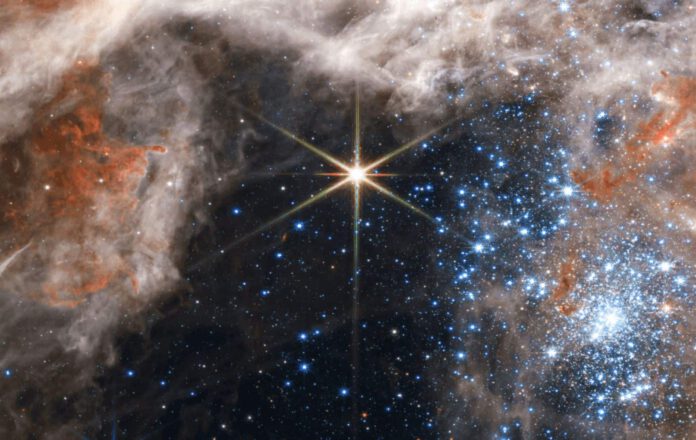
A Remarkable Galaxy Shows Stars Can Fade Quietly
Recent observations from astronomers have repeatedly noted stars suddenly disappearing from the night sky, raising many eyebrows. In a new study, researchers have attempted to find an explanation for this mysterious phenomenon. They seem to have succeeded with the help of an unusual binary star system.
Supernova
Even our own star, the Sun, is not eternal. One day, it will expand, eventually swallowing the Earth. During this process, the Sun will become increasingly unstable until it contracts into a compact object known as a white dwarf. If the Sun were at least eight times more massive, it would likely end in a massive explosion—a supernova. During this process, the collapse of the Sun would lead to an explosion, ejecting energy and mass into space with tremendous force, leaving behind a neutron star or a black hole.
Disappearance
But not all stars follow this same fate. “Astronomers have recently noticed that bright stars are suddenly vanishing,” says researcher Alejandro Vigna-Gómez. This is naturally very strange. Vigna-Gómez suspects that a galaxy called VFTS 243 might offer us greater insight into this phenomenon.
VFTS 243
VFTS 243 is an extraordinary binary star system located at the edge of our galaxy. Here, a large star and a black hole, with a mass roughly ten times that of our Sun, orbit each other. The presence of this black hole reveals that the system once harbored two stars. Stellar black holes like the one in the VFTS 243 system are formed when stars with more than eight times the mass of the Sun collapse.
The researchers searched for clues in VFTS 243 that are typically expected after a supernova explosion but found little convincing evidence.
Birth Kick
The VFTS 243 system, for example, shows no clear signs of a strong acceleration of surrounding objects, commonly known as a ‘birth kick.’ A birth kick usually gives neutron stars a measurable velocity of 100-1000 kilometers per second. For black holes, the speed is expected to be lower but still significant. The black hole in the VFTS 243 system appears to have accelerated only to about 4 km/s, indicating no clear signs of a powerful birth kick typically expected after a supernova explosion. Moreover, the orbit of the system is highly symmetrical. This is also quite remarkable. “The orbit of VFTS is almost perfectly circular,” Vigna-Gómez explains. “This again suggests that no explosion occurred.”
Collapse
In summary, nothing suggests that a supernova explosion occurred in VFTS 243. But how could the black hole have formed, then? The researchers have an idea. They suspect that very massive stars can collapse without the usual explosive supernova outburst. Their research suggests that when a star has sufficient mass, the gravitational force can be so strong that no explosion occurs as the star reaches the end of its life. Instead, the star can collapse entirely.
Fading Quietly
“If you look at a visible star that collapses completely, it could at that moment appear as if the star suddenly fades and disappears,” Vigna-Gómez says. “The collapse is so complete that no explosion occurs. Nothing escapes, and you won’t see a bright supernova in the night sky. Although we are not certain of a connection, the results of our analysis of VFTS 243 have brought us much closer to a credible explanation for the phenomenon of ‘disappearing stars.'”
Black Hole
This means that some stars can fade quietly and transform into black holes without anyone noticing. “Our research proves that the black hole in VFTS 243 likely formed directly,” researcher Irene Tamborra says. “Most of the energy probably went into neutrinos.”
Tamborra emphasizes that the VFTS 243 system provides an opportunity to test various theories and models within astrophysics against concrete observations. “Our results show that VFTS 243 is the best example to date of black holes forming through total collapse, without the expected supernova explosion,” she concludes. “This is an important test for our models. We expect this system will be of significant importance for future research into stellar evolution and collapse.”











